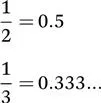
- 867 pages
- English
- ePUB (mobile friendly)
- Available on iOS & Android
Essential Mathematics for NMR and MRI Spectroscopists
About this book
Beginning with a review of the important areas of mathematics, this book then covers many of the underlying theoretical and practical aspects of NMR and MRI spectroscopy from a maths point of view. Competence in algebra and introductory calculus is needed but all other maths concepts are covered. It will bridge a gap between high level and introductory titles used in NMR or MRI spectroscopy. Uniquely, it takes a very careful and pedagogical approach to the mathematics behind NMR and MRI. It leaves out very few steps, which distinguishes it from other books in the field.
The author is an NMR laboratory manager and is sympathetic to the frustrations of trying to understand where some of the fundamental equations come from hence his desire to either explicitly derive all equations for the reader or direct them to derivations. This is an essential text aimed at graduate students who are beginning their careers in NMR or MRI spectroscopy and laboratory managers if they need an understanding of the theoretical foundations of the technique.
Frequently asked questions
- Essential is ideal for learners and professionals who enjoy exploring a wide range of subjects. Access the Essential Library with 800,000+ trusted titles and best-sellers across business, personal growth, and the humanities. Includes unlimited reading time and Standard Read Aloud voice.
- Complete: Perfect for advanced learners and researchers needing full, unrestricted access. Unlock 1.4M+ books across hundreds of subjects, including academic and specialized titles. The Complete Plan also includes advanced features like Premium Read Aloud and Research Assistant.
Please note we cannot support devices running on iOS 13 and Android 7 or earlier. Learn more about using the app.
Information
1.1 The History of Numbers

1.2 Why Complex Numbers?
Table of contents
- Cover
- Title
- Copyright
- Preface
- Contents
- 1 Complex Numbers
- 2 Matrices
- 3 Vectors
- 4 Vector Calculus
- 5 Introductory Tensor Analysis
- 6 Probability and Statistics
- 7 Waves
- 8 The Fourier Transform
- 9 Introductory Classical Mechanics
- 10 Special Relativity
- 11 Electric and Magnetic Fields
- 12 The Magnetic Moment and the Bloch Equations
- 13 Introductory Quantum Mechanics
- 14 The Hamiltonians of NMR
- 15 The Quantum Mechanics of Angular Momentum
- 16 NMR Rotation Operators
- 17 Density Operators and Matrices
- 18 The Product Operator Formalism
- 19 Coherence Transfer
- 20 Relaxation and the NOE
- 21 Data Processing
- 22 Magnetic Resonance Imaging
- 23 Electronics
- Appendix A Identities, Proofs and Miscellany
- Appendix B A Bruker to Varian Translation Table
- Subject Index